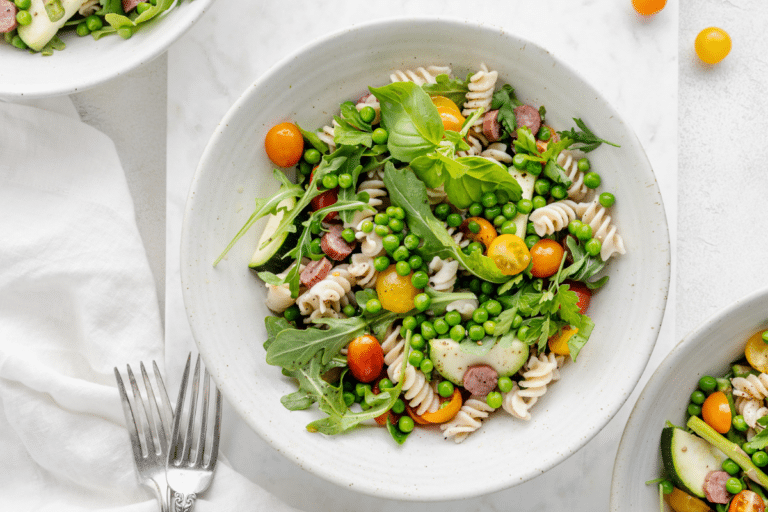Superfood Spotlight: Put the Power of Turmeric to Work for You
Looking for a natural way to ease the aches and pains of arthritis? Want a post-workout boost that will put the brakes on muscle soreness? How about a versatile cooking ingredient that will keep your immune system humming?
Meet the multi-talented turmeric – the golden spice that’s been making headlines as a “superfood”. While it’s been getting a lot of attention from the medical and culinary worlds lately, turmeric is no flash in the pan. This potent root has been cultivated for its healing powers for thousands of years.
Turmeric has garnered generations of devotees across the globe. In India, it’s used in curries; in Japan, it’s served in tea; in Malaysia, it’s used as an antiseptic. Around the world, it’s widely recognized as an anti-inflammatory agent that packs a powerful punch. Fueled by news of its health benefits, turmeric has made its way onto grocery shelves and into everything from smoothies to salads.
So – what is this wonder ingredient, and why has it won legions of fans?
Getting to Know Turmeric
Turmeric, a bright yellow spice commonly found in Asian cuisine, is derived from the Curcuma longa plant. Its power lies in its active compound, curcumin. This component not only gives turmeric its distinctive rich colour: it also packs the spice with health-giving properties. With roots deeply embedded in traditional Indian and Chinese medicine, turmeric has been used for centuries to address a wide range of ailments.
Like other colorful plant-derived foods, turmeric is loaded with antioxidants that protect the body by neutralizing free radicals and protecting the cells from damage. Diets rich in plant-based foods are associated with reduced risk for serious health conditions like cancer and heart disease. Additionally, antioxidants are vital for hair growth, strong nails, and healthy skin.
Intrigued? Let’s take a closer look at the many good reasons to give turmeric a try.
The Health Benefits of Turmeric Curcumin
Anti-inflammatory Properties
One of the key benefits of curcumin is its powerful anti-inflammatory effect. Chronic inflammation is linked to numerous health issues, including joint pain and arthritis. Incorporating turmeric curcumin into your diet may help in managing inflammation and alleviating associated discomfort.
Antioxidant Effects
Curcumin also acts as a powerful antioxidant, scavenging free radicals and protecting the body’s cells from oxidative stress. This not only supports overall health but may also play a role in preventing joint damage caused by oxidative processes.
Joint Health
Several studies have explored the impact of turmeric on joint health, with promising results. These studies suggest that turmeric may be a valuable natural supplement for those seeking alternative ways to support their joints. Scientific research suggests that curcumin can modulate inflammatory pathways, providing relief to individuals suffering from conditions like osteoarthritis and rheumatoid arthritis.
Beyond joint health, turmeric curcumin has shown promise in a number of fields, including heart health, cognitive function, and even cancer prevention. Studies have also shown promising results in the treatment of arthritis, respiratory infections, digestive disorders, muscle soreness, and depression. While more research is needed, these potential benefits are a good reason to incorporate turmeric into your daily routine.
Unlocking the Power of Curcumin
Ready to put the power of turmeric to work for you? Before you dash to the kitchen, the health food store, or the pharmacy, there’s something important that you need to know about turmeric: it’s not a star performer as a solo act.
Scientific studies have shown that curcumin has a low bioavailability and low absorption rate. In other words, the good stuff is in there – but our bodies need to find a way to access it and reap the health benefits.
The solution: pair turmeric with a partner that kicks its health benefits into high gear. The #1 candidate is probably already in your kitchen: black pepper. This humble spice contains the compound piperine, the key that unlocks curcumin’s superpowers. Combine those two, and you’ll increase its bioavailability by up to 2000%. How’s that for a dynamic duo?
Another tip for maximizing bioavailability: eat turmeric with healthy fats like avocado or olive oil. These foods contain lecithin, which helps the body dissolve and absorb curcumin. Eating turmeric with quercetin-rich foods like apples, berries, red grapes and onions can also enhance the spice’s bioavailability.
Finding the Right Dose
Working turmeric into your daily diet is easy. The World Health Organization has determined an acceptable daily intake of turmeric powder as 1.4 milligrams – roughly ½ to 1 ½ teaspoon – per pound of body weight it’s used as a spice in cooking. Most research suggests that turmeric’s supplement form should be kept between 500 and 2,000 milligrams daily.
But getting creative with turmeric in the kitchen is more fun, so . . . .
Get Cooking!
One of the easiest ways to incorporate turmeric curcumin into your diet is to cook with it. (Bonus: heating turmeric has been shown to amplify its bioavailability by as much as 12 times!)
It’s a common ingredient in many Indian and Southeast Asian dishes, but it can also be used in a variety of other cuisines. Here are a few ideas:
- Add turmeric to curries, stews, and soups.
- Use turmeric to make golden milk, a delicious and healthy drink.
- Sprinkle turmeric on roasted vegetables or grilled chicken.
- Add turmeric to your eggs in the morning.
- Experiment with turmeric in baked goods, like muffins or cookies.
- Mix it up! Blend turmeric with fruits, vegetables, and a dash of black pepper (which enhances curcumin absorption) for a refreshing and health-boosting beverage.
Make a Meal of It
Start your day on a healthy note with turmeric-infused breakfast options. Add a pinch to your morning smoothie, mix it into yogurt or eggs, or sprinkle it on your avocado toast for a flavorful twist.
Elevate your lunchtime meals by incorporating turmeric into salads, soups, or wraps. Turmeric pairs well with a variety of ingredients, adding both color and nutritional value to your midday dishes.
Top off your day with a turmeric-infused dinner. Whether it’s a turmeric-spiced lentil curry or a grilled turmeric chicken, the possibilities are endless. Get creative in the kitchen and enjoy the health benefits of this golden spice.
Even your snacks can benefit from a touch of turmeric. Try making turmeric-spiced nuts, popcorn, or even homemade energy bars. These snacks not only satisfy your taste buds but also contribute to your daily curcumin intake.
Ready to give turmeric a try? Here are a few things to keep in mind:
Common-Sense Caveats
- While turmeric adds a unique flavor to dishes, some may find it’s an “acquired” taste. Experiment with smaller amounts at first, gradually increasing as your taste buds adjust. Combining it with complementary spices like cinnamon can also balance its taste.
- The vibrant color of turmeric can stain surfaces, clothing, and utensils. To avoid this, use stainless steel or glassware when handling turmeric, and promptly clean any stains to prevent them from setting.
- While dietary sources are ideal, turmeric supplements are a convenient option for those with busy lifestyles. However, it’s crucial to choose high-quality supplements, considering factors like bioavailability and added ingredients.
- Most research indicates that turmeric’s supplement form should be kept between 500 and 2,000 milligrams daily.
- As with any new food or supplement, it’s always best to consult your healthcare provider before adding turmeric to your routine – especially if you have any underlying health conditions or are taking medications.
- While turmeric is generally safe for most people, it’s important to be aware of potential allergic reactions. If you experience any adverse effects such as rashes or digestive issues, discontinue use and consult a healthcare professional.
So – are you ready to take a pass on the aspirin and add some spice to your life? A potent antioxidant and inflammation fighter, this golden warrior has been revered for thousands of years for its multiple healing and health-boosting powers.
Be realistic in your expectations. Turmeric isn’t a “quick fix”. But with consistent daily use, within 4-8 weeks you should start to notice improvements. If you’re willing to invest the time in elevating your wellness routine, you’ll reap the health benefits.
Put turmeric to the test and it just might become your new wellness BFF. Your body will thank you!


